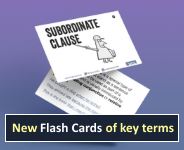Playing with person
In this exercise, students make changes to pronouns in texts, and evaluate the effects of those changes.
Goals
- Identify first, second, and third person pronouns, and practise switching from one to another.
- Evaluate the effects of writing using different personal pronouns.
Lesson Plan
The teacher explains that today, we will make changes to existing texts by changing the personal pronouns in those texts.
Welcome back!

Englicious is totally free for everyone to use!
But you will have to log in to see our library of teaching resources.
If you don’t have an account, that’s perfectly OK. You can register (for free).
It only takes a minute or two.
»
- Printer-friendly version
- Log in to view or leave comments

